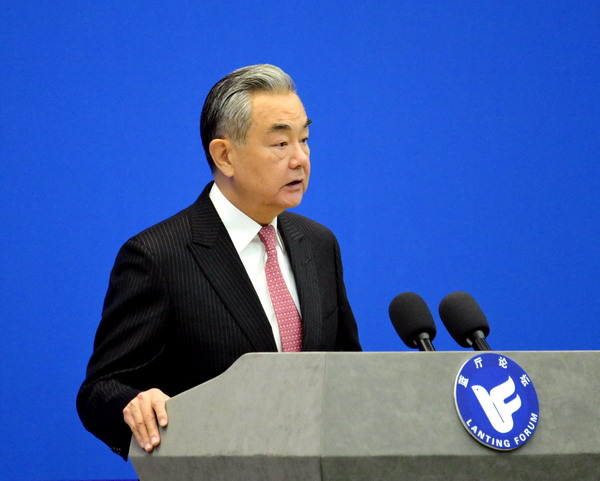Introduction
The bedrock of sustainable development, peace, and prosperity is good governance. In an environment characterized by inequality, corruption, and institutional rot, the need to measure governance performance has never been so important. Governance indicators are the best diagnostic instruments to measure the quality of leadership, strength of institutions, and systems for accountability in a country. They give a lens to look at how governments are doing in terms of fulfilling their duties for policymakers, citizens, and international organizations.” In this perspective, I consider the value of governance indicators and their capacity to serve as a powerful tool for accountability in order to influence effective leadership in both developed and developing countries.
Understanding Governance Indicators
Indicators of governance are both qualitative and quantitative measures for ascertaining the governance quality in terms of voice and accountability, political stability, effectiveness of the government, regulatory quality, rule of law, and control of corruption (Kaufmann, Kraay, & Mastruzzi, 2010). The WGI is the ‘Worldwide Governance Indicators’ of the World Bank, which is a global benchmark for governance in all these categories.
However, governance also entails the moral and ethical aspect of leadership. The highest form of governance is when all the leading and governance practices are carried out with transparency, inclusiveness, and a commitment to service. Governance value indicators are not merely indicators of a statistical system but the indicators of the ethical governance and the administrative honesty of a community.
The Role of Governance Indicators in Accountability
Good governance requires accountability. An unaccountable government tends to be inefficient, corrupt, and untrustworthy. Public governance accountability frameworks and governance indicators let all stakeholders monitor government actions and outcomes, domestic and international. Measurement creates visibility, and visibility invites responsibility (Andrews, 2013). Accountability to the citizenry is created when the performance of the government is quantified, to what extent does the government deliver, and to what extent does it manage justice and resources and rights? As an illustration, accountability frameworks centered on policy capture and corruption perception provide an insight into the willingness of the state to uphold fairness or the leaders to engage in nepotism. Public accountability frameworks on policymaking capture and provide the frameworks for citizen control and the excessive abuse of accountability frameworks and dictate accountability to the state. Limits to the abuse of accountability frameworks reinforce the civil spirit.
Governance and Leadership: The Human Dimension
Although governance metrics are quantified, the human aspect of leadership should not be ignored. Integral to effective governance are leaders whose hallmarks are integrity, vision, and compassion. Governance is more than the system’s management; it is the ability to evoke confidence and the willingness to promote the common good. Where governance metrics appear weak, the underlying problem usually is not a structural deficiency but a lack of leadership. Governance becomes ‘bad’ when leaders see power as a personal entitlement and not as a social obligation. On the contrary, leaders willing to ‘transform’ invigorate a climate of participation, open-ness, and joint responsibility. Fukuyama (2013) stated that the quality of governance improves when leaders design ‘capable’ governance institutions that outlast their personal power. Thus, governance metrics can indicate the state’s governance quality and whether the leaders govern with selfishness or selflessness.
The Global Perspective: Measuring Governance Across Nations
Globalization of the governance indicators has transformed the way leadership and development are perceived in the world. These indicators are used by institutions like the United Nations Development Program (UNDP), the World Bank, and Transparency International to rank countries and create policy interventions. As an example, the Corruption Perceptions Index (CPI) offered by Transparency International can help one understand the impact of corruption on the governance of different countries. With high scores, the nation has better democratic institutions and is more likely to be trusted by the people, whereas low scores are usually a sign of the existence of weak states with a low degree of accountability. Equally, the World Governance Indicators (WGI) evaluate six major dimensions that give an overall picture of the quality of governance (Kaufmann and Kraay, 2024). Nonetheless, global rankings are not judgmental and must not be considered as the ultimate. One should also take into consideration the cultural, political and socioeconomic contexts. A good governance in one country might fail to reflect similar performances in another owing to the variations of the administrative systems, political cultures, and the levels of participation of the citizens.
Challenges in Measuring Governance
Governance indicators also have a number of challenges in spite of their usefulness. To begin with, there is always a question of the reliability of data, especially in states with low levels of transparency and where statistical organizations are affected by politics. Secondly, a lot of governance indicators depend on the data based on perceptions, and it may be subjective. Thirdly, the global indices are at times Western-centric, which does not reflect the local governance realities. Furthermore, the politicization of the governance rankings might result in governments playing with the data or paying attention to the indicator management instead of the actual reform. This danger may result in the governance indicators becoming an exercise of symbolic compliance as opposed to being a transformative accountability instrument (Mimicopoulos, 2007). In order to address these constraints, governance assessment should incorporate a quantitative-qualitative mix of measures, including the citizens’ feedback, a participatory governance report, and an independent institutional evaluation.
Governance Indicators and Sustainable Development
It is impossible to deny the connection between governance and sustainable development. Sustainable Development Goal 16 (SDG 16) of the United Nations, which states that peace, justice, and strong institutions are key factors in sustainable development, explicitly identifies governance as one of the pillars of sustainable development. Good governance provides efficiency in the use of the available resources, reduction of corruption, and protection of the rights of the citizens. Empirical research demonstrates that the high-governance countries are more likely to achieve higher results on other SDGs like education (SDG 4), health (SDG 3), and poverty reduction (SDG 1) (Grindle, 2017). It goes to show that the governance indicators are not just standalone instruments but come hand in hand with realizing global sustainability and, well, human existence.
Reimagining Governance for the Future
With the transformation of societies in the digital era, the index of governance should also change. The new technology of blockchain, artificial intelligence, and open data platforms can enhance the measurement of governance by increasing levels of transparency and citizen involvement. As an example, the performance of the government can be monitored instantly by digital governance dashboards, which will make leadership more responsible. Nevertheless, digitalization of governance should be inclusive. As long as the digital divide is not bridged, the governance indicators can still indicate inequalities instead of solving them. Hence, governance measurement in the future must be participatory, transparent, and citizen-driven to make governance a source of empowerment and not exclusion.
Conclusion
The governance indicators are not merely statistical tools; they are the moral compasses that show how good the countries are and the honesty of their officials. They do not only gauge how well institutions perform, but they also gauge the morality of leadership. As the level of trust in governmental bodies is dwindling, now more than ever, there is a need to have transparent, accountable, and responsive governance. Being citizens and stakeholders in the world, we cannot perceive the governance indicators as some abstract data; we need to see them as an invitation, like a wake-up call that leadership must serve people, justice, and progress. The real power of a nation will not be its economic power, but its governance integrity and the belief of its people.

Participant of ICSF – UOS Fellowship Program 2025-26 at University of Sargodha.










